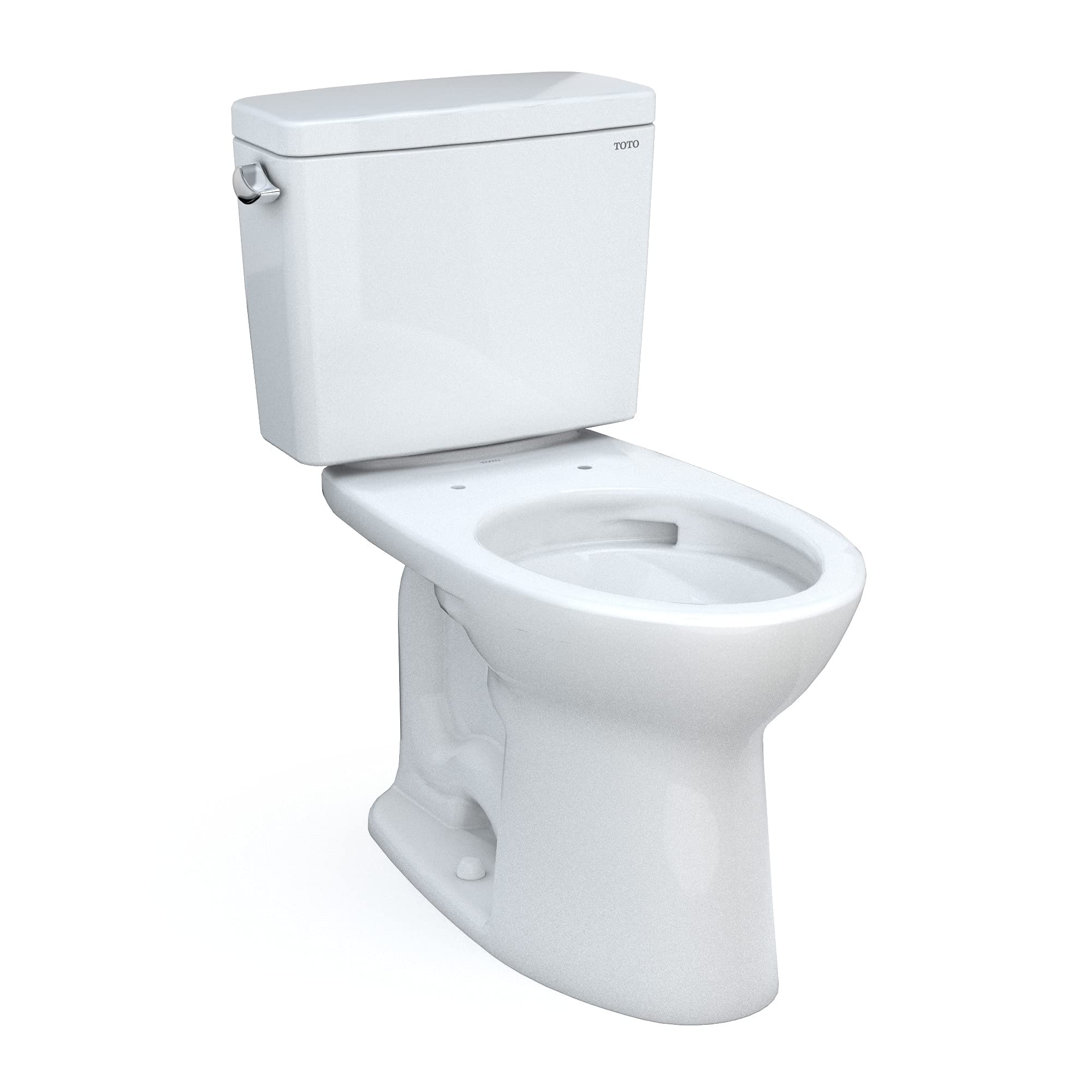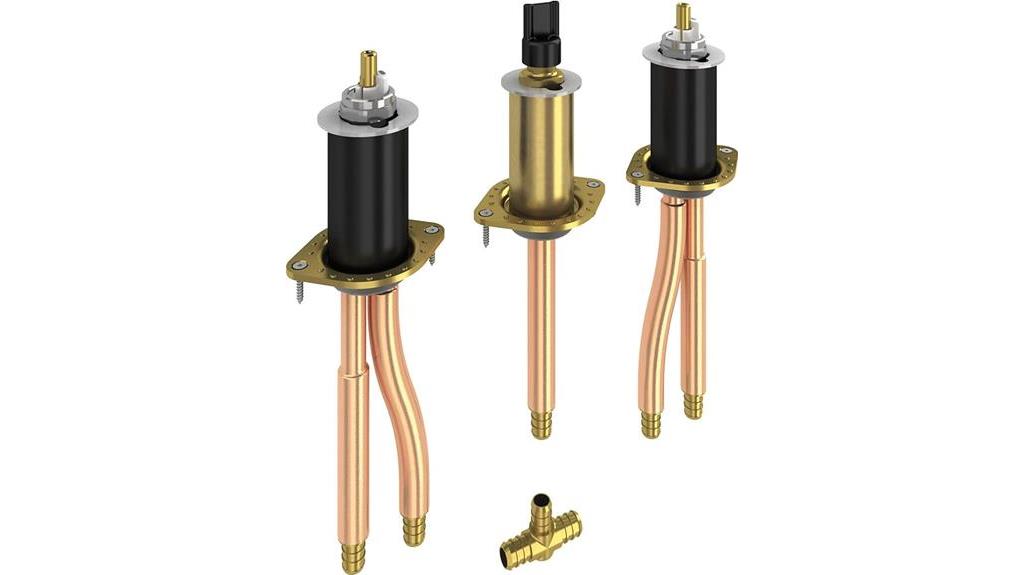As a homeowner, finding a toilet that combines style, efficiency, and easy cleaning is a top priority.
That’s why I was thrilled to discover the Kohler Devonshire toilet. With its sleek design and durable vitreous china construction, this two-piece toilet is not only aesthetically pleasing but also incredibly easy to maintain.
The AquaPiston flushing system ensures a powerful and water-saving flush, while the seamless cleaning operation requires minimal effort. Plus, the three-bolt quick-connect installation makes setup a breeze.
Get ready for a hassle-free bathroom experience with the Kohler Devonshire toilet.
Key Takeaways
- The Kohler Devonshire is a two-piece toilet made from vitreous china, available in multiple colors.
- It features an elongated bowl design and a comfort height of 16.5 inches for added comfort.
- The toilet uses AquaPiston technology for a 360-degree flush and has a water consumption of 1.28 gallons per flush, saving over 16,000 gallons per year.
- The toilet is easy to clean and maintain, with a seamless cleaning operation and minimal scrubbing required.
Main Features and Design
I love that the Kohler Devonshire toilet is available in a variety of colors and has an elongated bowl design for added comfort. This toilet is made from vitreous china and comes in colors such as white, biscuit, dune, ice grey, sandbar, cashmere, thunder grey, and black.
One of the pros of this toilet is its comfort height of 16.5 inches, which alleviates pressure on the knees. The flush handle can be positioned on the left or right-hand side, providing flexibility during installation.
Customer reviews rave about the AquaPiston flushing system, which creates a powerful 360-degree flush using gravity. With a water consumption of 1.28 gallons per flush, this toilet is also environmentally friendly.
Overall, the Kohler Devonshire toilet offers a stylish design, comfortable seating, and efficient flushing system, making it a popular choice among customers.
Flushing System
The AquaPiston technology creates a 360-degree flush, ensuring a powerful and efficient flushing system. This innovative technology utilizes gravity to create a strong siphon, effectively removing waste with just a single flush.
The AquaPiston flush valve allows water to flow into the bowl from all sides, creating a powerful swirl that cleans the entire surface. Not only does this technology provide excellent flushing performance, but it also helps conserve water.
The Kohler Devonshire toilet with AquaPiston technology is WaterSense certified, meaning it meets strict criteria for water efficiency. With a water consumption rate of just 1.28 gallons per flush, this toilet can save over 16,000 gallons of water per year compared to older, less efficient models.
Cleaning Process
Using gentle cleaning agents and a damp cloth, wiping down the exterior of the toilet is a simple and effective way to keep it clean. To ensure the longevity of your Kohler Devonshire toilet, it is important to use safe cleaning agents that won’t damage the finish. Avoid harsh chemicals or abrasive cleaners as they can cause scratches or dull the surface. Instead, opt for mild soaps or non-abrasive cleaners specifically designed for toilets.
Start by dampening a cloth or sponge with water and apply a small amount of the cleaning agent. Gently wipe down the exterior surfaces, including the tank, bowl, and seat. Pay special attention to areas that may accumulate dirt or grime, such as around the base or under the rim. Rinse the cloth or sponge regularly to remove dirt and residue.
Regularly cleaning your Kohler Devonshire toilet with safe cleaning agents will help maintain its shine and cleanliness for years to come.
Installation Ease
Installation of this toilet is a breeze with its three-bolt quick-connect system and preinstalled tank bolts. As someone who has installed toilets before, I can confidently say that this one is a DIY dream.
The three-bolt quick-connect system makes it easy to attach the tank securely to the bowl, ensuring a leak-free installation. Plus, the preinstalled tank bolts save you time and effort.
When it comes to toilet maintenance, there are a few DIY tips to keep in mind. Regularly check for any leaks or drips and tighten any loose connections. It’s also important to clean the toilet regularly using gentle cleaning agents to protect the finish.
Sturdy Construction
I was impressed by the durable vitreous china material used to construct this toilet. The Kohler Devonshire toilet is built to last with its sturdy construction and long-lasting durability. Made from high-quality vitreous china, it is resistant to cracks and provides a strong foundation.
With proper maintenance, this toilet is unlikely to encounter any structural issues. To keep it in good condition, it is recommended to use gentle cleaning agents that won’t damage the toilet’s finish. The exterior can be easily wiped down with a damp cloth or sponge. The impressive flushing mechanism also helps to keep the interior clean.
Overall, the Kohler Devonshire toilet is a reliable and durable investment that will stand the test of time with proper care.
Frequently Asked Questions
What Is the Warranty on the Kohler Devonshire Toilet?
The warranty on the Kohler Devonshire toilet is a limited one-year warranty. It covers defects in materials and workmanship, providing peace of mind for any potential issues that may arise with the product.
Does the Kohler Devonshire Toilet Come With a Soft-Close Seat?
No, the Kohler Devonshire toilet does not come with a soft-close seat. However, it is easy to install and only requires basic DIY skills. The installation process is made even simpler with the three-bolt quick-connect system.
Can the Flush Handle Be Customized With a Different Finish?
Yes, the flush handle on the Kohler Devonshire toilet can be customized with a different finish. This allows you to personalize the look of your toilet and adds a stylish touch to your bathroom decor.
Is the Kohler Devonshire Toilet Compatible With Bidet Attachments?
Yes, the Kohler Devonshire toilet is compatible with bidet attachments. It meets the installation requirements for bidet installation and provides a convenient and efficient option for enhancing your bathroom experience.
Are Replacement Parts Readily Available for the Kohler Devonshire Toilet?
Yes, replacement parts for the Kohler Devonshire toilet are readily available. Customers have praised the ease of finding and purchasing spare parts online. Numerous positive customer reviews attest to the availability and convenience of obtaining replacement parts.










